A Half-Century of Seeing with Luis Orozco
“What I do remember, and perhaps few others are alive to share these memories now, is that, before the tourists, came the painters. Greece, and the Cyclades in particular, with their ethereal, stunning light, called artists forth from all over the world. Luis and Lilly were not alone, painting in cold island studios in 1960. Mykonos, with its whitewashed, cubistic architecture, its vividly contrasting sea, sky, and flora, and its faces—the indelible faces of the Mykonians—drew and held artists close.”—Elizabeth Boleman-Herring
By Way of Being
By Elizabeth Boleman-Herring
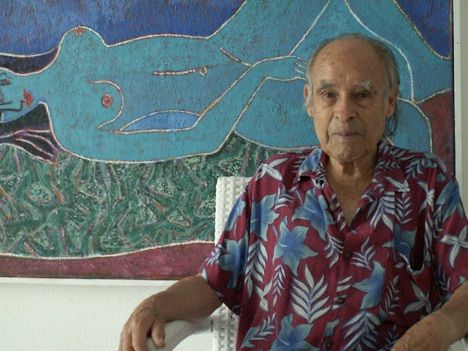
“I remember an Athenian art critic wondering where I found so many colors, Mykonos being a ‘white dove.’ Invariably, people accuse me of bringing my Mexican colors with me.”—Luis Orozco, 2003
“I’m a Mykonian from Mexico.”—Luis Orozco
PENDLETON South Carolina—(Weekly Hubris)—October 2018—The last time I saw Luis, in 2011, he and his third wife, the East German painter Dorlies Schapitz, were alive and well, holding forth from their last small gallery in Hora, the capital town of Mykonos.
Since I was in Greece every year, had been in Greece almost every year since Luis and I met, in 1960, I took it for granted that I would just see Luis . . . “next year,” as I always had. Usually, we avoided good-byes. My husband and I came in late autumn, after the tourists departed, spent several weeks in the company of Luis and Dorlies, had a few memorable evenings at the Lotus Bar, shared a few good late-fall dinners, al fresco, and then melted away without farewells, only to see them again the following year.
Then, in 2010, after Luis (and his adopted island) celebrated a half century of his painting on Mykonos, cancer felled Dorlies in a terrible coup de foudre. Her death coincided with Greece’s economic crisis, and Dean and I felt very far away, and helpless, in New Jersey; then, Florida. The exigencies of life, moving, and economic hardship prevented us from returning to Greece after 2011.
In my heart, though, I felt it would still, always, be . . . “next year.”
When had I not had Luis in my life?
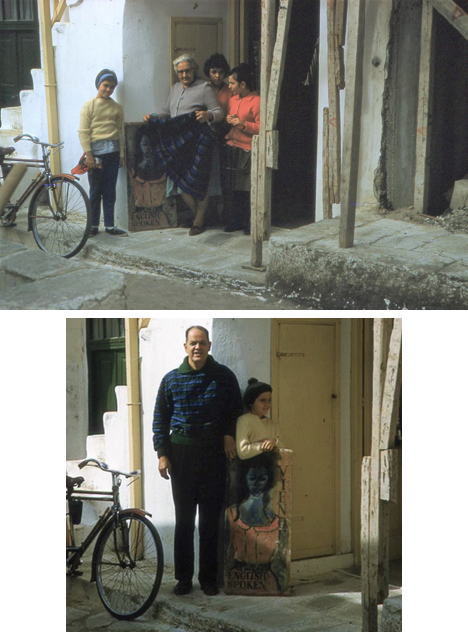
Literally, I met Luis, and his first wife, Danish painter Lilly Kristensen, the year I first came to Greece with my parents: our friendship, and our shared, lifelong love affair with Greece, began that year. I arrived, after dark, on a primitive, smelly old barque from Piraeus, handed down, asleep, onto a caïque, and received into the arms of Mykonian fishermen moonlighting—literally—as ferrymen. The next morning, my parents and I met—and were engulfed by—the weaver Vienoula and her family, some of the only English-speakers on Mykonos at that time; and by Luis and Lilly, who were living in a beautiful, now-lost part of Hora called Stoupa. For me, then, Greece would always be Mykonos; and Mykonos would always be Luis.
As Luis told writer Alexandra Tzavella, in 2016:
“I set sail from New Orleans on a Liberty cargo ship, holding a Greek textbook in one hand and a guitar in the other. We traveled for 40 days. At night, I’d listen to the songs of the Greek sailors; by the time we reached Piraeus, I had learned all the words.” It was 1960 when he first set foot on Mykonos, then an 11-hour trip from Piraeus on the ferry Kyra Despina. His friends left once their vacation was over, but he was held back by what he describes as: “Two lights: A Mykonian woman who didn’t want me in the end, and the light of the island, which is ideal for a painter.”
The woman was Vienoula Kousathana’s eldest daughter, Anouzo, whose portrait now hangs in our foyer here in South Carolina. A monotype oil on paper, it was the second Orozco my father purchased. I knew, even as a child, that Luis’s heart had been broken that first year on Mykonos. But, by the time we met, he was living with the immensely gifted collagist and painter, Lilly Kristensen, and expecting their first child, Marios, whose birth I attended in Denmark.
My father, a Fulbright scholar, saw immediately the scope of Luis’s talent. A frustrated painter, himself, and a professor and writer with the benefit of grant dollars from home, my father bought canvases as he was able. Both of my parents knew that the young couple—Luis, of Mexico City, and Lilly, of rural Denmark—were struggling just to survive and remain in barely post-war Greece. But the couple did survive, and attracted many other patrons as the 60s wore on and the stark life the two artists led in those early years eased with the burgeoning of foreign tourism.
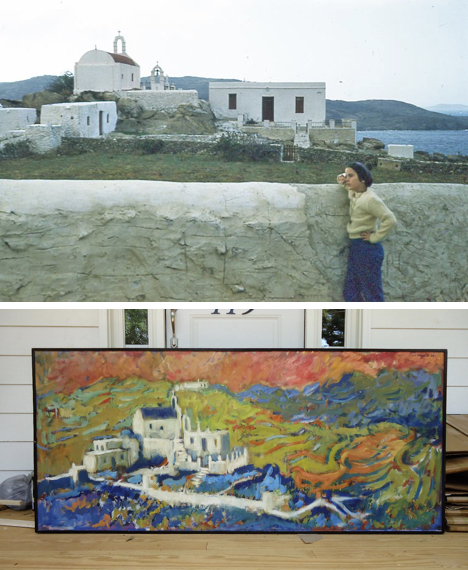
At first, though, during our early years together in Athens and on Mykonos, life was incredibly spartan for us all. Just keeping body and soul together in the islands, between 1960 and 1964, was a challenge. I contracted dysentery, and nearly died, my second year in Greece; and I remember Lilly suspending Marios’s little cradle from the rafters to raise him above the danger of the fierce island rats.
On lush, wealthy Mykonos today, it is almost impossible to envision, to remember, the privation of the years before “the visitors” arrived, with their hard currency. (If I am granted a bit more time and grace, perhaps I will finally write about what I remember of Greece and the Greeks in the 1960s.)
What I remember, and perhaps few others are alive to share these memories now, is that, before the tourists, came the painters.
Greece, and the Cyclades in particular, with their ethereal, revelatory light, called forth artists from all over the world.
Luis and Lilly were not alone, painting in cold island studios in 1960. Mykonos, with its whitewashed, cubistic architecture, its vividly contrasting sea, sky, and flora, and its faces—the indelible faces of the Mykonians—drew and held artists close.
In fact, Luis married in succession, three fellow foreign painters of the island.
Despite being barely 4’9”, Luis had a lifelong and island-wide reputation as a ladies’ man (there really is no better way to put it). I believe he loved each of his wives in turn, and Dorlies best: all three were artists in their own right (and Luis’s second wife, Lucy Peters of La Jolla, had her own luminous style: I can still see her canvases floating before me, and I’ve not seen Lucy, herself, since the 1970s). But Lilly was unique in her gifts, and influenced Luis more than he could ever admit.
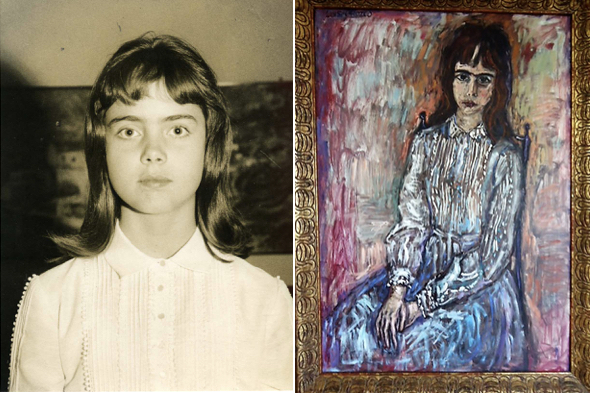
As an honorary “niece,” I was immune to Luis’s charms as a man, but became his grateful painting student for one year in the mid-70s, and, in adulthood, bought his, Lilly’s, and Dorlies’s work when able.
Luis was, as well as being a master-painter, a gentle, supportive, and generous teacher. I shared his studio on Matogiannis Street for a year, and learned the craft of painting in oils, if not the art. Luis took me walking and sketching across rural Mykonos, and taught me to sit still and see. Every canvas I produced under him was derivative of his unique style: the man had an artistic magnetic field that only painters fully formed when they came to him could resist echoing.
Since childhood, I have lived surrounded by Luis’s paintings. My husband and I now literally have too few walls on which to hang them all.
His palette and his style—which, for lack of a better word, for lack of a word at all, Athenian critics termed “fauve”—have become the window through which I see Greece; how Greece appears to me.
It is a bitter thing to have lost him this year without the benefit, the honor, of a last farewell.
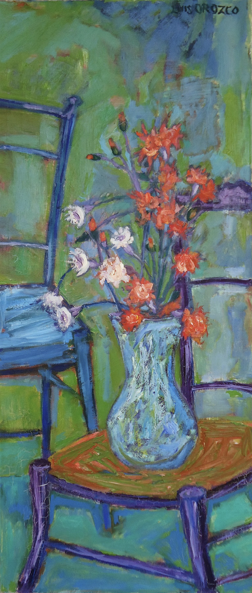
I look now at the first canvas my father bought from him on Mykonos, a still life that seems to my eye “not yet an Orozco.” Stretched on a poor thin little canvas—all the starving artist that he was in 1960 could afford—and painted with not-the-best oils, it is reminiscent of Luis-in-art-school-in-Mexico-City, of Luis before I knew him.
In that first year on his chosen island, though, he emerged with his gifts full-blown and, though his style evolved, and became much more abstract over time, and his subject matter expanded exponentially as he gained the bravado to paint and exhibit his series of immense female nudes, Luis was fully an adult in his visual room from a very early age.
He had that extremely rare thing in a visual artist: absolute courage. He would paint, and paint what he wanted to, and do not one thing else, or . . . die.
So, despite his womanizing and oh, God, his off-key singing and terrible playing of the Spanish guitar, and despite his real and sad failings, early, as a father, he was the single most creative person I have ever known. His creativity was irrepressible. And it fostered the creativity of others. Luis made one see. He made me see. And thank heaven I am, till my eyes close, surrounded by his work, surrounded by his Greece, his Mykonos. He made certain that, no matter whether, now, I ever return to Mykonos, I have it, and him, with me always.
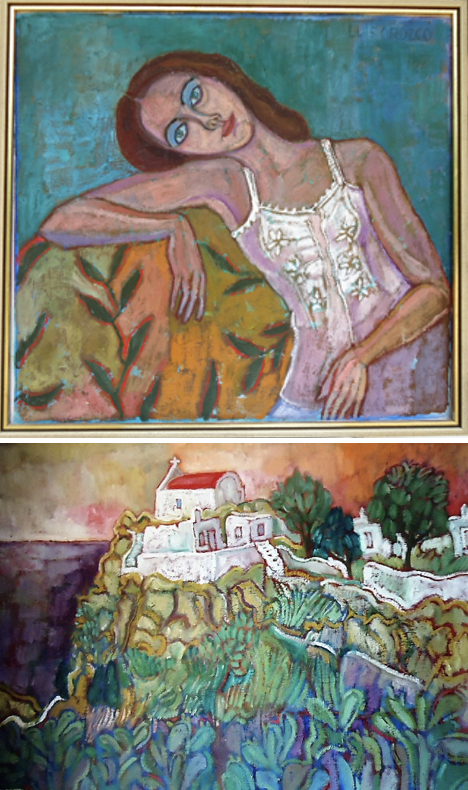
![]()
Further Reading
“Mykonos On Canvas,” by Luis Orozco.
“Mykonos: A Sentimental Journey,” by Elizabeth Boleman-Herring.
“Luis Orozco, a Mexican painter in Mykonos,” the artist’s website.
“Greece is Mykonos,” by Alexandra Tzavella.
“Lilly Says Good-bye to Greece,” by Willard Manus.
![]()
To order Elizabeth Boleman-Herring’s memoir and/or her erotic novel, click on the book covers below:
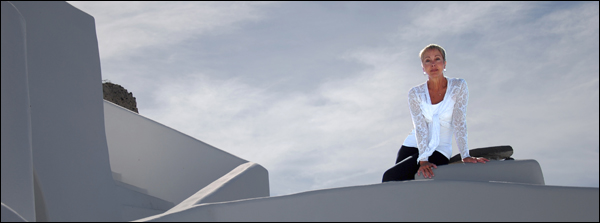

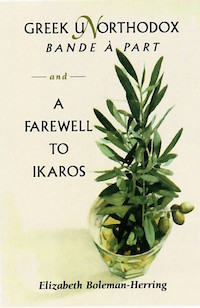
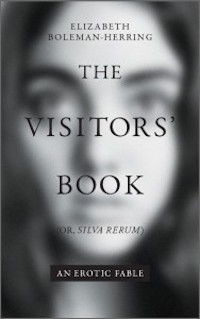
6 Comments
jerry
Beautiful, makes me yearn for the good old days on Mykonos, even though I was never there. But it does stir the real memories within that bring me back to early times of moving through days of wondrous spaces inhabited with people and light that I was only beginning to comprehend as the pieces forming my young life.
And Orozco’s first painting of you is so gorgeously you!
Elizabeth Boleman-Herring
Jerry, there are STILL good old days on Mykonos, from mid-September to mid-October. We can still make it. Soon. Love you.
judy pearce
I was on Mykonos around 1969/70 as a very young 19 year old from the
‘burbs of Columbia, SC. I would not have appreciated Orozco, though I fall into him now, through you.
Anita Sullivan
That does it, I’m taking up my Greek again just in case! Thank you for this beautiful tribute to such an obviously amazing artist.
Jean-Michel Lochet
Merci pour cet très bel article qui ravive si bien le souvenir de Luis et dorlies
Elizabeth Boleman-Herring
Dear Jean-Michel, thank you for reading and writing in. I think of both Luis and Dorlies every day, as our home is very much a domestic gallery of their work. They are with me always…..